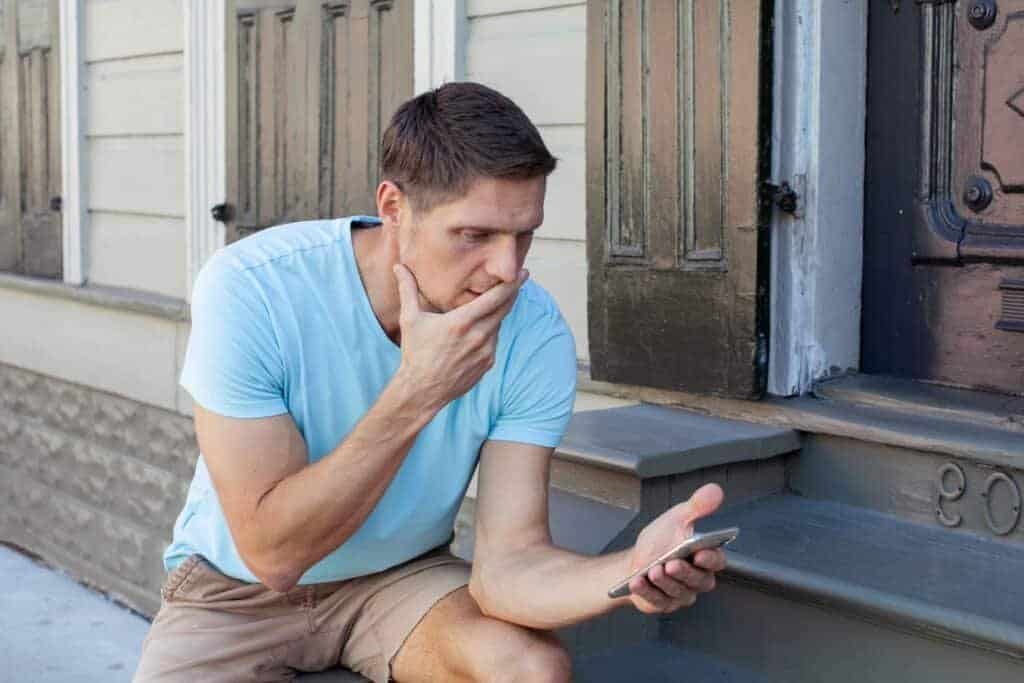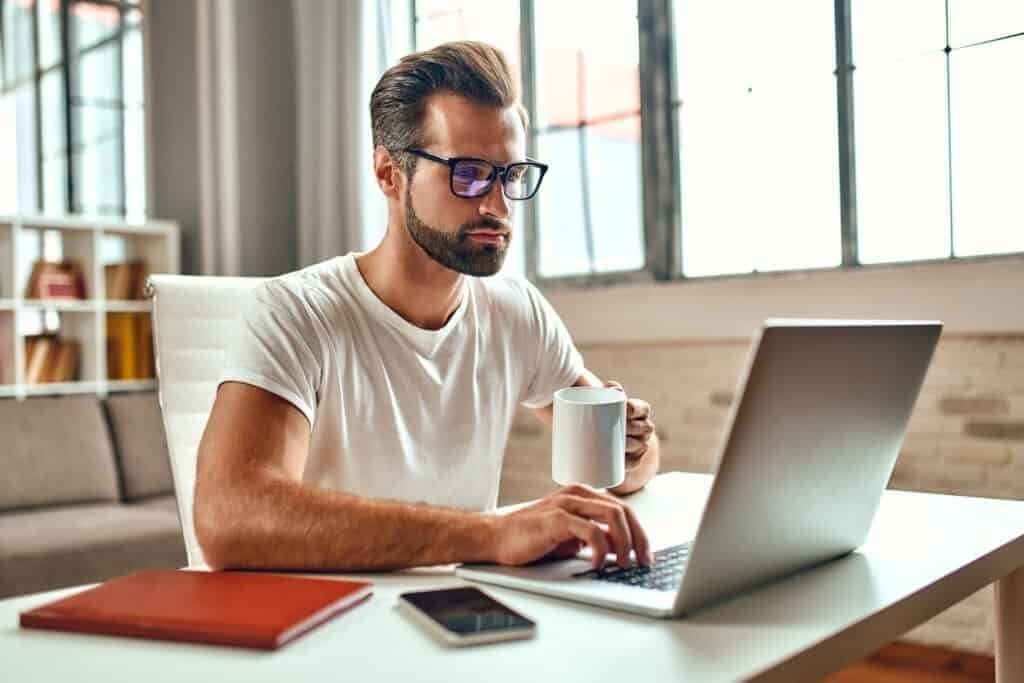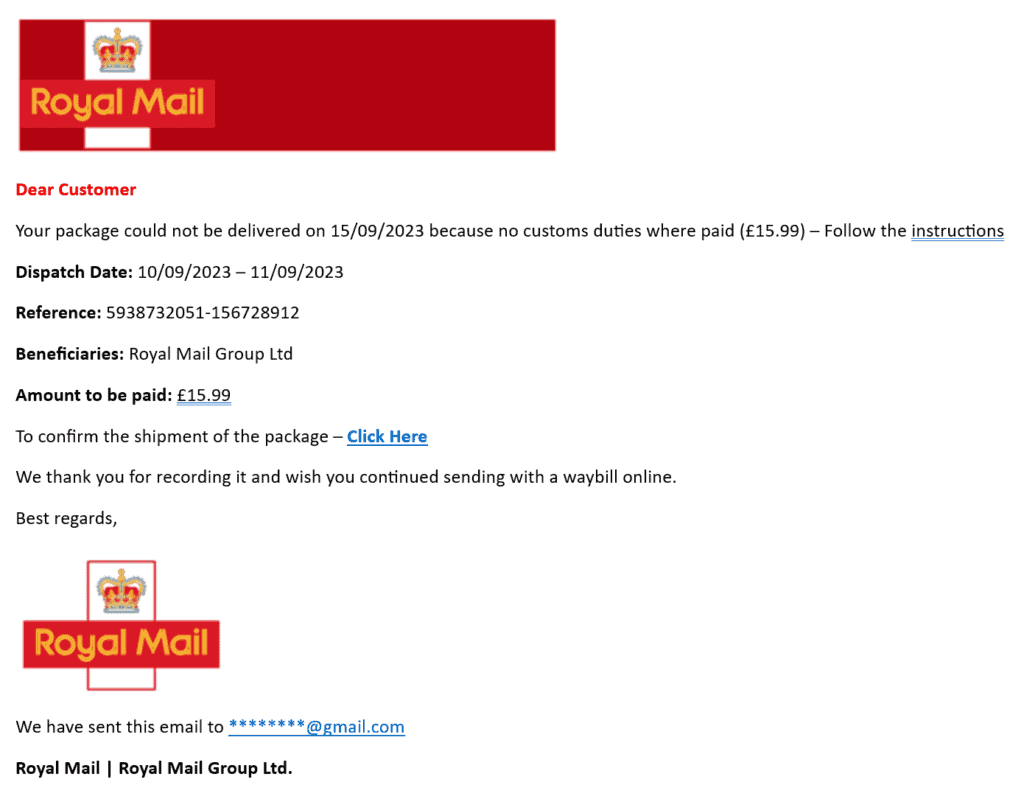How to identify and avoid a Royal Mail fee to pay scam

We may earn a small fee from the companies mentioned in this post.
In an increasingly digital world, online scams have become all too common, leaving many unsuspecting victims in their wake. One such scam that has been widely reported is the Royal Mail Fee to Pay Scam.
This deceptive tactic targets innocent customers, aiming to steal their hard-earned money and sensitive personal information. Don’t become a victim, with the right knowledge and vigilance, you can protect yourself from falling prey to these unscrupulous scammers.
In this comprehensive guide, we will delve into the various methods employed by scammers, including phishing text messages, fraudulent emails, and social media deception. We will provide you with valuable tips on how to identify red flags in Royal Mail scams, as well as actionable steps you can take to safeguard yourself from these malicious tactics.
By the end of this article, you will have gained the knowledge and confidence needed to navigate the digital landscape without falling victim to the Royal Mail Fee to Pay Scam.
Understanding the Basics
The Royal Mail Fee to Pay Scam is a sophisticated phishing attempt where scammers send fraudulent texts or emails, pretending to be from Royal Mail, to steal personal and financial information. Recognising and avoiding these scams is essential for protecting yourself from potential fraud. Be aware of red flags that indicate a Royal Mail scam, such as grammar errors and requests for personal information or payment.
Analyse Web addresses: Scammers can manipulate the URL (Web address) making slight changes to the URL address to fool victims into believing the Web address is legitimate
Identifying the Scam:
Grammar and Spelling Errors: Official Royal Mail communications are less likely to contain basic spelling mistakes or grammar errors, unlike scam messages
Suspicious Links and Email Addresses: Be wary of messages with unusual email addresses or links. Scammers often use slight variations of the official Royal Mail web address to deceive recipients
Analyse Web Addresses: Scammers can manipulate the URL (web address) making slight changes to the URL address to fool victims into believing the web address is legitimate
Generic Greetings: Scam messages may address you as “Royal Mail Customer” instead of using your name, indicating a lack of personalization typical of phishing attempts
Requests for Payment: Any text or email asking for a ‘redelivery charge’ or similar fees, especially without a corresponding grey Fee to Pay card left at your address, is likely fraudulent
Authenicating communications: Take precautionary steps such as authenticating communications, not replying to suspicious messages, and staying informed in order to protect yourself from Royal Mail scams.
Avoiding the Scam:
Direct Contact: If unsure about a payment request’s legitimacy, contact Royal Mail directly rather than clicking on any links
Do Not Share Personal Information: Never provide personal or financial details in response to unsolicited messages
Report Suspicious Messages: Forward suspicious emails to [email protected] and report scam texts by taking a screenshot and sending it to the same email address
Stay Informed: Regularly visit official Royal Mail and cybersecurity websites for updates on new scam tactics and advice on safeguarding your information
Common Tactics Used by Scammers:
Claiming a package is held due to unpaid shipping fees
Mimicking official logos, branding, and language to appear legitimate
Creating urgency to prompt quick, less cautious responses from potential victims
Understanding the Royal Mail fee to pay scam

The Royal Mail Fee to Pay Scam is a clever attempt by scammers to acquire personal and financial information by sending fake Royal Mail texts that contain links to phishing websites. These fraudsters employ a variety of tactics, such as indicating that a delivery needs to be rescheduled, that additional postage needs to be paid, or that a package is ready to track. Scammers may claim there is ‘insufficient postage paid’ to make the scam seem more believable. By being aware of the potential markers of a Royal Mail text scam, you can avoid falling victim to these deceptive ploys.
It is crucial to report any suspicious messages you receive and refrain from clicking on any links within them. In the following sections, we will explore the different methods scammers use to deceive their victims, from phishing text messages and fraudulent emails to social media deception.
Checkout our informative article, scammers on Vinted
Phishing text messages
Phishing text messages are a key component of the Royal Mail Fee to Pay Scam, with scammers sending fraudulent texts containing links to phishing scams in order to obtain personal and financial information. They may also attempt to entice you to click on a link within the email and force you onto a fake royal mail website.
These messages typically state that the recipient must pay a fee to receive their package and include a link to make the payment. Scammers may encourage victims to ‘pay your fee online’ through a fake website. However, this link is not affiliated with Royal Mail and instead leads to a phishing website or a fake Royal Mail branded website where the victim’s credit card numbers and confidential information can be stolen.
If the victim clicks on the link in the text message, they are directed to a phishing website where their private information can be taken by the scammers. In some cases, scammers may claim that the package is being held at a local sorting office or that the fee is for an international customs fee to make the scam seem more believable.
If the victim pays the fee through the link, their personal information could be compromised, and the scammers may ask potential victims for their pay card details to complete the transaction.
You may find our informative article on what is Smishing usful
Fraudulent emails
Royal mail scam email is another common tactic used as part of the Royal Mail Fee to Pay Scam. Scammers send emails that appear to be from a legitimate source, such as Royal Mail, but are actually sent by cybercriminals with the intent of acquiring the recipient’s own personal details or financial information.
These emails often use Royal Mail branded logos or language, but may contain suspicious elements, such as requests for personal information or financial transactions. Scammers may use a postage paid counterfeit stamp to make the email appear legitimate. These emails may also direct the victim to a scam site, aimed at extracting login details or other personal information.
To protect yourself from falling victim to the Royal Mail fee to pay scam, or in fact any fraudulent emails, follow these steps:
Be cautious and skeptical when dealing with unexpected or suspicious emails, particularly those that request personal information or financial transactions.
If you suspect you have become a victim of a fraudulent email, contact your bank or credit card company immediately and report the incident.
Report Royal Mail Fee to Pay Scams and forward any suspicious text messages to 7726 to report a suspected scam.
Checkout our article on the best ways to protect against Phishing emails
Social Media Deception
Social media deception is yet another method employed by scammers to perpetrate the Royal Mail Fee to Pay Scam. Fraudsters create fake competitions and requests for personal information on social media platforms, using official branding to appear credible. This form of deception can lead to a variety of fraudulent activities, in such cases as:
Scams
Phishing attempts
Fake news
These activities can result in personal or financial losses for the victims.
To identify and prevent social media deception, follow these steps:
Be vigilant of any suspicious messages or posts on social media platforms.
Exercise caution when responding to requests for personal information or offers that appear too good to be true.
If you suspect you have been a victim of social media deception, contact your bank or credit card company immediately.
Report the incident to the police and the social media platform where the scam occurred.
Identifying red flags within a Royal Mail fee to pay scam

Recognising the red flags in Royal Mail fee to pay scams is essential to protecting yourself from potential fraud. In this section, we will discuss tips for identifying fake Royal Mail communications, such as analysing web addresses and verifying official Royal Mail email messages.
Being aware of the potential indicators of a Royal Mail fee to pay scam, such as poor grammar or spelling, requests for personal information or payment, scammers may ask for ‘pay cards’ details to complete the transaction, and suspicious email or text messages claiming to be from Royal Mail or a delivery company, can help you stay one step ahead of the scammers.
To safeguard yourself from a Royal Mail Fee to Pay scam, it is crucial to be alert to any dubious correspondence via e mail or emails claiming to be from Royal Mail or a delivery firm. In the following subsections, we will delve into specific strategies for analysing web addresses and verifying official Royal Mail communications.
Checkout our informative article on Royal Mail scams
Analysing web addresses

When it comes to identifying a Royal Mail fee to pay scam, analysing web addresses is a critical step. Scammers often create counterfeit websites that closely resemble the official Royal Mail website, aiming to deceive unsuspecting victims.
By carefully inspecting the web address, you can look for any discrepancies or strange elements that may suggest a scam, helping you to avoid being duped by phishing attempts and protect your personal information.
As an example: An email from payment@royalmaill.com may look legitimate at quick glance. However there is an extra “L” in the word “mail” – The email address ending in royalmaill.com is therefore fraudulent and should be ignored and reported.
Email subject: Your package could not be delivered on 10/09/2023 (the date will change as required).
The email may look a little like the image below:

The example above is a generic version of the scam, and may change depending on the scammers intent, but you should always check the email address properly and never click on any link within the email.
The links within the email (or text) will link you to a fake website where the scammers will entice you into paying the sum they allege you owe through your credit card, or they may steal your personal information.
If you receive an email or an SMS text with a link regarding a Royal Mail fee to pay, do not click on the link. Instead, register online with the Royal Mail website and download the Royal Mail app onto your phone to respond via the app.
Ensure there is a fee associated with your address before proceeding. To reiterate, should you receive a suspicious email, refrain from clicking on any links within the email, particularly if it requests personal financial information such as bank details.
Checkout our informative article on the Immediate Connect Scam
Verifying Official Royal Mail Communications
In order to confirm the legitimacy of a message claiming to be from Royal Mail, it is important to look for signs of authenticity, such as the Royal Mail logo, (although this can be easily faked). Check the contact information, and other official branding.
Furthermore, comparing the communication to the content present on the official Royal Mail website can “potentially” help you identify any discrepancies and possibly determine if the message is genuine. However, always independently check before you send any personal data or money.
If you receive a dubious Royal Mail message, it is advised to contact Royal Mail directly to ascertain the validity of the message. It is very easy for a scammer to copy information from the Royal Mail website, so always be suspicious of any communication that requests money or personal information.
By taking these steps to verify official Royal Mail communications, you can better protect yourself from scams and ensure that you are at only time engaging with genuine correspondence.
Royal Mail Grey Fee to Pay Card
This is an official notification used by Royal Mail to inform recipients that there is a fee (such as unpaid postage or customs duties) that needs to be paid before a parcel or letter can be released for delivery. Typically, this grey card will include a “Royal Mail grey card reference number,” which is crucial for verifying and paying any fees owed via official Royal Mail channels.

However, scammers have exploited this process by mimicking the “grey card from Royal Mail.” They create fake notifications that look remarkably similar to the genuine post office grey card, tricking recipients into believing they owe a fee. The scam involves directing victims to a fraudulent website, where they are asked to enter personal and financial information under the guise of paying the fee.
It’s essential to closely inspect any grey card you receive. If you’re expecting a package and find a grey fee to pay card in your mailbox, take a moment to verify the details. Look for the official Royal Mail grey card reference number and use it to check the status of your item directly through the Royal Mail website or by visiting a local post office.
By being vigilant and aware of the characteristics of the official notification, you can protect yourself from falling victim to this scam.
Protecting yourself from Royal Fee to Pay Mail scams

Now that we have explored security details of the various methods scammers use and the red flags to be aware of, it is crucial to take action to protect yourself from a Royal Mail Fee to Pay scam. In this section, we will discuss steps you can take to safeguard against scams, including reporting suspicious messages and staying informed about current scams. Additional charges may include ‘plus incremental postage rounded to the nearest 10 pence.’
Attention Royal Mail customers: it is important to be aware of requests for payment in order to receive a package from Royal Mail. To authenticate Royal Mail communications, consult the Royal Mail website for official contact information and confirm that the message is from an authorised source. If you receive a dubious message, it is advised not to reply, send email or transfer any funds, and to inform Royal Mail about the message.
To remain informed about current scams, consider:
Following Royal Mail on social media
Subscribing to their email alerts
Regularly checking the Royal Mail website for updates on current scam email and SMS notifications
Regulary checking the Joncosson.com blog posts for Royal Mail Fee to Pay Scam updates and subscribing to our newsletter,
By staying informed and vigilant, you can protect yourself from falling victim to a Royal Mail Fee to Pay Scam.
Website user preferences
It is important to leverage your website user preferences effectively by customising your browser settings to block pop-ups and disable automatic downloads, as these are common tactics used in phishing scams.
If you’re using a service like Royal Mail’s official website, make sure to set up account alerts for any unusual activity. These alerts can often be configured in the user preferences section of your account.
Also, consider using website-specific passwords and enable two-factor authentication where available. This adds an extra layer of security, making it harder for scammers to gain unauthorised access to your accounts.
Reporting suspicious messages
Reporting suspicious messages is a vital step in protecting yourself from the Royal Mail scam text and scams. If you receive a suspected Royal Mail text message scam, it is recommended to forward the message to 7726 (which spells SPAM on your phone’s keypad). Reporting these messages not only helps to prevent financial loss, but also increases awareness, strengthens security measures, and preserves personal information.
In addition to forwarding suspicious messages to 7726, it is also important to report them to Royal Mail or authorities such as Action Fraud. By reporting these messages, you can help raise awareness and prevent others from falling victim to these scams.
Staying informed
Staying informed is essential in protecting yourself from Royal Mail scams. Royal Mail has created a specific page on its website to educate customers about the current scam emails and SMS notifications. It provides detailed and useful information about how to protect yourself from these scams. By regularly checking this page, you can stay up-to-date on the latest scams and tactics employed by fraudsters.
Another way to stay informed is to sign up for email alerts from Royal Mail or follow them on social media. These platforms will keep you updated on the latest scam tactics, allowing you to recognize and avoid them before they can cause any harm.
What to do if you fall victim to a Royal Mail Fee to Pay scam

If you find yourself a victim of a Royal Mail scam, it is crucial to act quickly in order to mitigate the damage. Here are the steps you should take.
Change any compromised passwords immediately.
Contact your bank and use the number on the back of your card to ensure you are speaking to a genuine representative. Your bank may have a procedure in place to address Phishing or Smishing scams, however, there is no guarantee that you will receive a refund.
If the bank’s final decision is still negative, your next step should be to contact the Financial Ombudsman Service.
Additionally, if you receive a call from someone impersonating your bank, immediately terminate the call and use a telephone call the customer service number printed on the back of your debit card to contact your bank. By taking these steps, you can minimise the impact of the scam on your personal and financial well-being.
In conclusion, the Royal Mail Fee to Pay Scam (also known as the royalmail.com/feeto pay scam) is a pervasive and clever threat that targets unsuspecting victims with the aim of stealing personal and financial information. By understanding the various methods used by scammers, recognising red flags, and taking steps to protect yourself, you can minimise the risk of falling prey to these fraudulent schemes.
Being proactive in your approach to safeguarding your personal and financial information is crucial in navigating the digital landscape with confidence. Stay vigilant, stay informed, and take action to protect yourself and others from the ever-evolving tactics employed by scammers in the Royal Mail Fee to Pay Scam.
Is the Royal Mail fee to pay card a scam?
The Royal Mail Fee to Pay card is a genuine notice asking customers to pay for an underpaid item. It offers the option to go to your local RM Delivery Office to pay cash, or to put the value of stamps on the card and mail back, which would be impossible for scammers.
Why do I have to pay a fee to Royal Mail?
You may have to pay a fee to Royal Mail if there are customs charges or import duties on an international package, or if there’s insufficient postage on a mailed item. The fee may include ‘£1.50 plus incremental postage’ based on the specifics of the mailing situation. The fee ensures that the necessary taxes are paid, or covers the cost of additional postage, allowing the package or letter to be delivered to the recipient.
What happens if I underpaid postage Royal Mail?
If you have underpaid postage on a parcel to Royal Mail, they will identify this and contact the sender to recover the difference. You may receive the item with an additional £1 charge for collection. Additionally, a medium parcel exceeding length may incur a flat fee of £10. Alternatively, the item may be returned to the sender.
What happens to underpaid postage?
Underpaid postage occurs when a mailed item does not have enough postage to cover the shipping cost. In many cases, the recipient may be required to pay the difference in postage to receive the item. Parcels exceeding length 61cm width 46cm may incur additional charges. If the recipient refuses to pay, the item may be returned to the sender, who may then be responsible for the additional postage. As payment on delivery UK maybe required, some postal services may also charge a handling fee for underpaid items.
Is the Royal Mail fee to pay legit?
Also known as “royalmail/feetopay” & “royalmail.com/feetopay”, the legitimacy of the Royal Mail fee to pay depends on the specific circumstances. Royal Mail may charge a fee for services such as customs handling or redelivery. It’s recommended to verify the details of the fee, such as the reason for the charge and the official channels to pay, to ensure its legitimacy. A parcel exceeding length 61cm may incur a flat fee of £10.
What is the royalmail.com/feeto pay scam
The royalmail.com/feeto (sometimes known as royal mail fee2pay) pay scam is a phishing scam where fraudsters send emails or text messages claiming that there is a fee to be paid in order to receive a package from Royal Mail delivery service. These messages often contain a link to a fake website that mimics the official Royal Mail website. Users are asked to provide their personal and financial information, which is then used for fraudulent purposes. Additionally, a parcel exceeding length 61cm width may incur a flat fee of £10. It is important to be cautious and verify the authenticity of any communication before providing any sensitive information or making any payments.
What is Royal Mail unpaid postage scam?
The Royal Mail unpaid postage scam is a fraudulent scheme where scammers send out emails or letters pretending to be from the Royal Mail or another postal service. They claim that the recipient has an undelivered package due to unpaid postage fees and request delivery payments (using a variety of payment methods including cash payments) or personal information to release the package. Parcels exceeding ’61cm width 46cm depth’ may incur additional charges. This is a scam designed to trick people into giving away their money or personal details before they accept delivery. It is important to be cautious and verify the authenticity of any such communications before taking any action.
What is the Royal Mail scam card through door?
The “Royal Mail scam card through door” is a common scam where fraudsters leave a card claiming to be from the Royal Mail, stating that a delivery was attempted but no one was home. The card usually includes a phone number or a website to arrange a redelivery. However, these are fake contact details used to gather personal information or to scam individuals. It’s important to be cautious and verify the authenticity of such cards by contacting the official Royal Mail customer service directly.
It’s crucial to be vigilant about fake Royal Mail websites. If you’re directed to a site resembling www.royalmail.comfeetopay, check for any discrepancies in the URL or website design that might indicate it’s not legitimate. Remember, the genuine Royal Mail website will have a secure connection (https://) and no unusual or extra characters in the URL. If the sender did not pay full postage and you’re asked to cover the difference, verify this information through official Royal Mail channels. To ensure safety, directly navigate to the official Royal Mail website instead of clicking on links in emails or messages. If you suspect a scam, report it immediately to Royal Mail through their official scam reporting channels.
I received an email claiming to be from Royal Mail, asking for payment due to incomplete postage. How can I identify if it’s a scam and report it?
Royal Mail Fee to Pay scam emails often ask recipients to make payments for various reasons, like incomplete postage. To identify a scam, look for red flags such as poor grammar, urgent requests for payment, or links to unofficial websites (like paycars.co.uk). A legitimate Royal Mail email will not direct you to unfamiliar websites for payments. If you’re unsure about the authenticity of an email, do not click on any links or provide personal information. Instead, contact Royal Mail directly through their official contact points.
Are there scam emails about parcel delivery?
Yes, there are scam emails circulating that falsely claim to be about Royal Mail parcel delivery. These fraudulent emails often inform recipients that they have a parcel waiting to be delivered but require a payment for delivery charges or customs fees before the parcel can be released. This is another variant of the Royal Mail Fee to Pay scam. These emails may look convincing, with official-looking logos and formatting, and might even include links to websites that closely mimic the legitimate Royal Mail site. The aim of these scams is to trick individuals into providing personal and financial information, such as credit card details or login credentials.
Usefull external references
Royal Mail Official Websitewww.royalmail.com
Royal Mail’s official site often provides alerts and guidance on current scams, including those involving fraudulent fee-to-pay messages.
Action Fraudwww.actionfraud.police.uk
Action Fraud is the UK’s national reporting center for fraud and cybercrime. They provide information on various scams, including those related to Royal Mail.
Which? Consumer Rightswww.which.co.uk
Which? offers consumer advice and has detailed articles on different scams, including postal scams. Their insights can be valuable for understanding how the scam operates.
Citizens Advice provides free, confidential information and advice on scams. They may have information on the Royal Mail fee to pay scam and how to report it.
With over three decades of experience in the heart of London’s financial sector, I have dedicated my career to the pursuit of robust cybersecurity practices and IT leadership. As a Certified Information Systems Security Professional (CISSP), Certified Information Security Manager (CISM), Certified Chief Information Security Officer (C|CISO), Certified Ethical Hacker (CEH), and Computer Hacking Forensic Investigator (CHFI), I bring a wealth of knowledge and expertise to the table.
My journey in the field of cybersecurity has not only been about personal growth but also about sharing my insights with others. As an international speaker, I have had the privilege of addressing audiences worldwide, discussing the importance of cybersecurity in today’s digital age. My passion for knowledge sharing extends to my work as an author and blogger, where I delve into the complexities of cybersecurity, offering practical advice and thought leadership.
In my role as a CISO and Head of IT, I have overseen the development and implementation of comprehensive information security and IT strategies. My focus has always been on creating resilient systems capable of withstanding the evolving landscape of cyber threats.
My Master’s degree in Cybersecurity has provided a solid academic foundation, which, when combined with my practical experience, allows me to approach cybersecurity from a holistic perspective.
I am always open to connecting with other professionals in the field, sharing knowledge, and exploring new opportunities. Let’s secure the digital world together.

